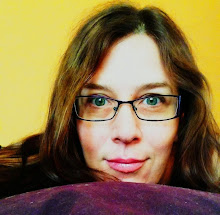 Two BC artists have just constructed the Standing Babas, as a timeless monument on Salt Spring Island. This collection of menhir-like reminds the locals of Stonehenge.
Two BC artists have just constructed the Standing Babas, as a timeless monument on Salt Spring Island. This collection of menhir-like reminds the locals of Stonehenge.Salt Spring Islander, Ronald T. Crawford’s work is known around the island and throughout Western Canada. That work includes: his paintings, some of which appear in the Banff Centre’s permanent collection; sculptures, such as those at the island’s world famous Hastings House; and his stone masonry and landscape art that have improved the quality of life for many BC residents over the past twenty years.
Crawford believes that his art and career grow through the people he hires to work and that this has been especially true of his assistant, Terry Bieman, a fellow stonemason and three-dimensional artist. This has also proved true of one employer who had followed Crawford’s work for years and envisioned a circle of stones on his property, overlooking the harbour. Inspired, Crawford set to work.
Crawford and Bieman relied solely upon the island’s local supply of stone for the thirteen Babas, who average thirteen-to-sixteen feet in height each, and their eight “life-size” witnesses. Most of the Babas are comprised of three to five stones each, with the heaviest stone weighing in at five and a half tons. Maybe being constructed from literal pieces of the island adds to the ancient feeling one gets walking among them.
“Yet,” Bieman adds, looking at them, “You definitely see that they are crafted. The human hand is all over them.” In Crawford’s vision for the Babas, he thought first of his Celtic ancestors, but the title of the piece and the placement of the witnesses also speak to the human history of the space.
The Standing Babas are Hindus, who have vowed to stand, much the way one takes a vow of silence, in order to reach enlightenment faster. This name of a group of monolithic statues, standing in a circle next to the ocean, nods to British Columbia’s early Southeast Asian Settlers, as well as the tourists who come to Salt Spring on creative and spiritual retreats. The witnesses are in keeping with the aboriginal tradition of creating smaller totem poles as witnesses to larger totem poles and other works of land art.
The exact location of the Standing Babas remains a secret, as Crawford and Bieman deeply respect the landowner’s right to privacy, but images of the Babas on the web are already generating discussions about where such a work could also be placed, as well as the mysteries around building it. Discussions are underway for creating a photographic book, with photographer: Theresa Mackey, about the way the Babas change over the coming year.
For more information, visit: http://ronaldtcrawford.com/babaspages/babas1.html
Or contact Ronald T. Crawford by email ronaldtc@telus.net or phone 250.537.4913.

No comments:
Post a Comment